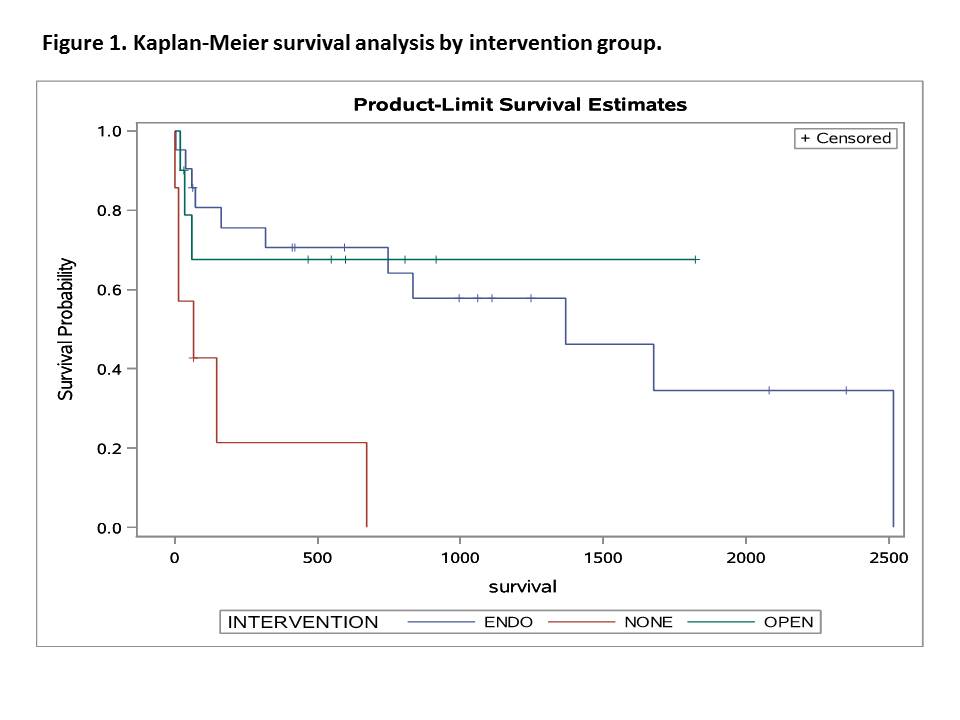Clinical characteristics and longitudinal outcomes of mycotic aortic aneurysms
J. Michael Cullen, MD, J. Hunter Mehaffey, MD, Alexander T. Booth, BA, Robert B. Hawkins, MD, Michael Spinosa, BA, William P. Robinson, III, MD, Margaret C. Tracci, MD JD, Gorav Ailawadi, MD, Kenneth J. Cherry, MD, John A. Kern, MD, Gilbert R. Upchurch, Jr., MD.
University of Virginia, Charlottesville, VA, USA.
Objective
Medical therapy alone for mycotic aortic aneurysm (MAAs) is almost universally fatal, while open surgical and endovascular repair is associated with high morbidity and mortality. It is hypothesized that open surgery would be associated with worse early outcomes but superior long-term results.
Methods
Records of patients diagnosed with MAAs at a single center from 2008-2015 were obtained and stratified by intervention: medical therapy, open surgery, endovascular repair. The primary outcomes examined were aneurysm-related mortality and survival. Outcomes and risk-adjusted associations with mortality were assessed using time to event analysis.
Results
38 patients were identified with a mean age of 67.6 ± 12 years. 21 patients underwent endovascular repair, 10 had open surgery, and 7 received medical therapy alone. Of the 18 deaths within the cohort, 94.4% were deemed aneurysm-related mortalities (n=17). Survival was significantly higher in the endovascular group (864 ± 782 days) versus the open surgery and medical therapy groups (530 ± 566 and 140 ± 240 days, respectively; p = 0.02). Figure 1 displays the Kaplan-Meier survival analysis. Complications were more common among the open surgery group than the endovascular group (80% vs. 43%; p < 0.01). However, none of the open surgery patients experienced reinfection compared with 4 in the endovascular group. Medical therapy was associated with an increased risk of death (HR 5.3, p < 0.01), and every 1-cm increase in aneurysm size was associated with increased risk of death (HR 1.4, p = 0.03).
Conclusions
Open surgery provided better freedom from reinfection, and was the most durable option in this series as open repair had a better long-term outcome. While much of the recent literature has served to highlight the durability of endovascular repair for MAAs, the present study demonstrated a high rate of late complication, especially reinfection in the endovascular group. 
Back to 2018 Program




